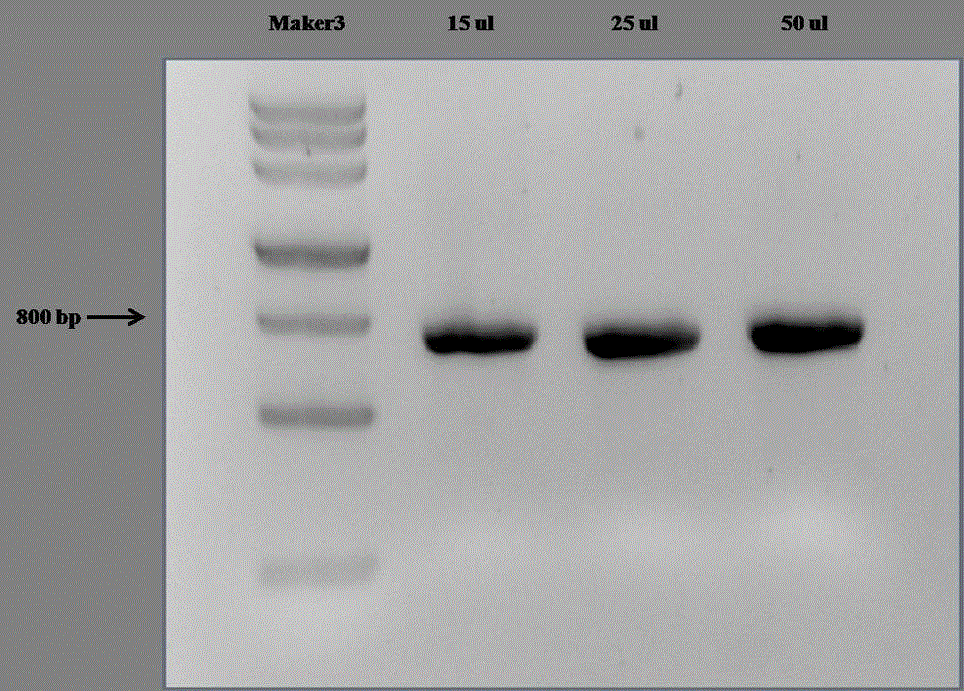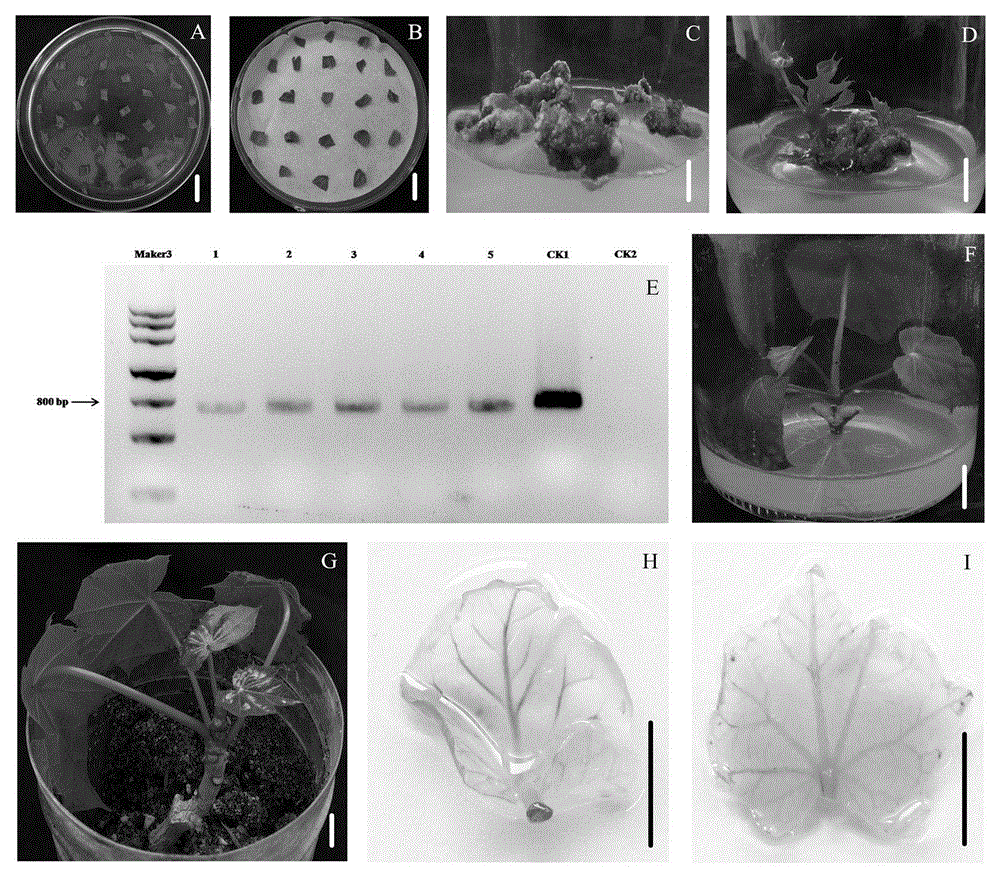Agrobacterium tumefaciens-mediated genetic transformation method for Jatropha curcas
A genetic transformation method and Agrobacterium-mediated technology, which can be used in the fields of Agrobacterium-mediated genetic transformation of Jatropha curcas and Agrobacterium-mediated genetic transformation, which can solve the problems of low transformation rate and long time.
- Summary
- Abstract
- Description
- Claims
- Application Information
AI Technical Summary
Problems solved by technology
Method used
Image
Examples
Embodiment 1
[0025] S1. Preparation of Agrobacterium liquid for infecting and treating Jatropha curcas cotyledon explants
[0026] Use a sterilized inoculation loop to dip a little bacterial solution from the small tube containing the Agrobacterium strain (containing the recombinant plasmid of the plant binary expression vector), and after streaking on the solid YEP medium, place the petri dish at 28 Cultivate in a biochemical constant temperature incubator for 3 days. After a single colony grows on the medium, pick a single colony with an inoculation needle and inoculate it into a 50 mL centrifuge tube (sterilized) containing 20 mL of liquid YEP medium. After culturing on a shaker (28°C, 200 rpm) for 24 hours, centrifuge at 4000 rpm for 10 min, retain the precipitate and pour off the supernatant, then add 20 mL of liquid co-culture medium to the large centrifuge tube, suspend the precipitate, and place on a constant temperature shaker ( 28°C, 200 rpm) for 1 hour, adding liquid co-cu...
Embodiment 2
[0067] Example 2 Effects of pre-cultivation and co-cultivation time on the regeneration efficiency of induced cotyledon explant resistant shoots
[0068] In this study, the aseptic seedlings of Jatropha curcas seeds with a seedling age of 5 days were cut to obtain cotyledon explants, which were treated with a short-term high-concentration TDZ solution (same as in Example 1); After removing excess liquid from the explants, the explants were inoculated onto the pre-medium for 0, 1, 2 and 4 days of pre-cultivation; using OD 600 =0.1~0.2 Agrobacterium bacteria solution soaked and infected the explants for 30 seconds, blotted the excess bacteria solution on the explants on sterile absorbent paper, and then inoculated it on the surface of the medium and placed a sterile On the filter paper co-culture medium, after 0, 1, 2, 3 and 6 days of co-cultivation, the explants were inoculated on the selection and recovery medium and cultured for 30 days. The experimental results are s...
Embodiment 3
[0073] Example 3 Optimization of the PCR Detection System for the Obtained Resistant Bud Strips
[0074] In this study, the aseptic seedlings of Jatropha curcas seeds with a seedling age of 5 days were cut to obtain cotyledon explants, which were treated with short-term TDZ solution (same as in Example 1); After the excess liquid on the explants, inoculate the explants on the pre-medium for 1 day pre-culture; use OD 600 =0.1~0.2 of the Agrobacterium bacteria solution to soak and infect the explants for 30 seconds, then absorb the excess bacteria solution on the explants on sterile absorbent paper, without the step of cleaning the explants with antibiotic solution, Then inoculated on the co-culture medium with sterile filter paper placed on the surface of the medium, after 2 days of dark culture, the explants were inoculated on the selection and recovery medium and cultured for 30 days, and then the explants with resistant buds were inoculated The plant was inoculated to t...
PUM
| Property | Measurement | Unit |
|---|---|---|
| Diameter | aaaaa | aaaaa |
Abstract
Description
Claims
Application Information
 Login to View More
Login to View More - R&D
- Intellectual Property
- Life Sciences
- Materials
- Tech Scout
- Unparalleled Data Quality
- Higher Quality Content
- 60% Fewer Hallucinations
Browse by: Latest US Patents, China's latest patents, Technical Efficacy Thesaurus, Application Domain, Technology Topic, Popular Technical Reports.
© 2025 PatSnap. All rights reserved.Legal|Privacy policy|Modern Slavery Act Transparency Statement|Sitemap|About US| Contact US: help@patsnap.com



